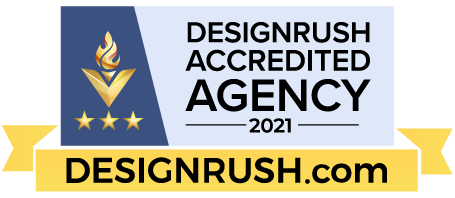The Ultimate Guide to Starting a Blog and Monetizing It. In today’s digital landscape, blogging is not just a form of expression but also a viable income source. Whether you’re passionate about travel, food, technology, or any other subject, turning your passion into profit is more accessible than ever.
- Blogging Popularity: As of 2023, there are over 600 million blogs out of 1.7 billion websites worldwide, highlighting the vast landscape of blogging and its popularity as a digital communication medium.
- WordPress Dominance: WordPress powers over 40% of all websites on the internet, making it the most popular Content Management System (CMS) for bloggers and businesses alike.
- Ad Revenue Potential: Google AdSense, a popular monetization tool for bloggers, boasts over 2 million active publishers. In 2020, Google paid out over $10 billion to its publishing partners, showcasing the potential earnings from ad placements.
- Affiliate Marketing Growth: The affiliate marketing industry is valued at over $12 billion globally, with a growth trajectory that indicates a steady increase in opportunities for bloggers to earn through affiliate partnerships.
- E-Commerce Surge: The global e-commerce sales are expected to hit $4.9 trillion in 2021, a figure that is projected to grow over the coming years. This surge presents an opportunity for bloggers to sell digital products or services directly to their audience.
- Reader Engagement: Studies show that companies with blogs produce an average of 67% more leads per month than those without, demonstrating the importance of content in engaging and expanding your audience.
- Mobile Optimization: With over 50% of global internet traffic coming from mobile devices, having a mobile-responsive blog is crucial for reaching and engaging the modern audience.
- SEO Impact: Websites that blog have 434% more indexed pages on search engines, enhancing visibility and driving organic traffic.
This guide will walk you through the steps of starting your blog and various strategies to monetize it effectively.
Step 1: Find Your Niche
The first step in starting a blog is identifying your niche. Your niche should be something you are passionate about and knowledgeable in, but it should also have a decent audience interested in the topic. Conduct market research to ensure there’s a demand for the content you plan to create.
Step 2: Choose a Blogging Platform
Select a blogging platform that suits your needs. WordPress is one of the most popular options due to its flexibility, ease of use, and extensive customization options. Other platforms like Blogger, Squarespace, and Wix are also worth considering based on your technical expertise and specific requirements.
Step 3: Set Up Your Blog
Once you’ve chosen your platform, it’s time to set up your blog. This involves selecting a domain name, choosing a hosting service, and designing your blog. Your blog’s design should reflect your niche and personality while being user-friendly and mobile-responsive.
Step 4: Create Quality Content
Content is king in the blogging world. Start creating original, high-quality content that provides value to your readers. Your posts should be informative, engaging, and tailored to your target audience. Consistency is key, so develop a content calendar to maintain a regular posting schedule.
Step 5: Promote Your Blog
With your blog in place and content ready, it’s time to attract readers. Utilize social media, SEO strategies, and email marketing to promote your blog. Engaging with your audience through comments and social media can also help build a loyal reader base.
Monetizing Your Blog
1. Advertising
One of the most straightforward ways to monetize your blog is through advertising. Google AdSense is a popular choice, allowing you to earn money by displaying ads on your blog. You can also explore direct advertisements where companies pay you to advertise their products or services on your site.
2. Affiliate Marketing
Affiliate marketing involves promoting products or services and earning a commission for every sale made through your referral. Join affiliate programs related to your niche, and integrate affiliate links naturally into your content.
3. Sponsored Content
Once your blog gains traction, you might be approached by brands to write sponsored posts. These are posts where you’re paid to talk about a product or service. Ensure transparency with your audience by disclosing sponsored content.
4. Selling Digital Products or Services
If you have expertise in a particular area, consider creating and selling digital products like e-books, courses, or webinars. You can also offer consulting or coaching services related to your niche.
5. Membership or Subscription Models
For exclusive content, consider setting up a membership or subscription model. This can be an effective way to generate recurring income from dedicated readers willing to pay for premium content.

For bloggers looking to enhance their craft and streamline their workflow, a plethora of tools are available that cater to various aspects of blogging, from content creation to SEO optimization and audience engagement. Here’s a curated list of essential tools every blogger should consider, complete with links for easy access:
1. WordPress (Content Management System)
- Description: The most popular content management system, offering extensive customization through themes and plugins.
- Link: WordPress
2. Grammarly (Writing Assistant)
- Description: An AI-powered tool that helps improve your writing by checking for grammar, punctuation, and style.
- Link: Grammarly
3. Canva (Graphic Design)
- Description: A user-friendly graphic design tool with templates for social media graphics, blog banners, and more.
- Link: Canva
4. Yoast SEO (SEO Optimization)
- Description: A comprehensive SEO plugin for WordPress that helps optimize your content for better search engine visibility.
- Link: Yoast SEO
5. Google Analytics (Analytics)
- Description: A powerful tool to track website traffic, user behavior, and various other metrics essential for bloggers.
- Link: Google Analytics
6. Mailchimp (Email Marketing)
- Description: An all-in-one email marketing platform to manage subscribers, send emails, and track results.
- Link: Mailchimp
7. Trello (Project Management)
- Description: A flexible project management tool that helps organize your blogging schedule, content ideas, and collaborations.
- Link: Trello
8. BuzzSumo (Content Research)
- Description: A tool for discovering popular content and trends in your niche, helping you generate ideas that resonate with your audience.
- Link: BuzzSumo
9. Ahrefs (SEO & Research)
- Description: An advanced SEO toolset for keyword research, competitor analysis, and backlink checking.
- Link: Ahrefs
10. Hootsuite (Social Media Management)
- Description: Manage all your social media profiles from a single dashboard, schedule posts in advance, and track engagement.
- Link: Hootsuite
11. Ubersuggest (Keyword Research)
- Description: Neil Patel’s free tool for keyword research, SEO analysis, and content ideas.
- Link: Ubersuggest
12. Hemingway Editor (Writing Enhancement)
- Description: This tool helps simplify and strengthen your writing by highlighting complex sentences and common errors.
- Link: Hemingway Editor
13. Evernote (Note-Taking)
- Description: Capture ideas, to-do lists, and research in a well-organized digital notebook.
- Link: Evernote
14. CoSchedule Headline Analyzer (Content Optimization)
- Description: Analyze your headlines to increase click-through rates and search engine results.
- Link: Headline Analyzer
15. Unsplash (Stock Photography)
- Description: Access a vast library of high-quality, free-to-use images to enhance your blog posts.
- Link: Unsplash
Each of these tools offers unique features that can significantly contribute to the success of your blogging journey, from the inception of an idea to the publication and promotion of your content.
1. How do I choose the right niche for my blog?
Answer: Choosing the right niche involves a balance between your passions, expertise, and market demand. Research potential topics to see what resonates with audiences and where you can offer unique insights or solutions. Tools like Google Trends and BuzzSumo can help identify popular and evergreen topics.
2. What’s the best platform for starting a blog?
Answer: WordPress is highly recommended for its flexibility, extensive plugin ecosystem, and strong community support. It suits a range of blogging needs, from personal blogs to professional content platforms. Other user-friendly options include Blogger and Squarespace, depending on your specific needs and technical proficiency.
3. How often should I post new content on my blog?
Answer: Consistency is key to building an audience. The ideal frequency depends on your capacity and audience expectations. Starting with one quality post per week is manageable for many bloggers. As you grow, you can adjust based on audience engagement and content strategy.
4. What are some effective ways to monetize my blog?
Answer: Popular monetization strategies include advertising (Google AdSense), affiliate marketing, sponsored content, selling digital products or services, and subscription models. Diversifying your income streams can help stabilize your earnings.
5. How can I drive traffic to my new blog?
Answer: Utilize SEO best practices to improve your blog’s visibility in search results. Engage with social media platforms where your target audience is active, and consider email marketing to keep readers returning. Guest posting on established blogs can also increase exposure.
6. Do I need to be tech-savvy to start a blog?
Answer: Not necessarily. Many blogging platforms are designed with beginners in mind, offering intuitive drag-and-drop interfaces and pre-designed templates. Basic knowledge of SEO and social media can be beneficial but can also be learned gradually as you grow your blog.
7. How important is the design of my blog?
Answer: Your blog’s design plays a crucial role in user experience and branding. A clean, navigable, and aesthetically pleasing design can help retain visitors and establish your blog’s identity. Many platforms offer customizable themes to match your style and niche.
8. Can I start a blog for free?
Answer: Yes, many platforms offer free plans with basic features, which are great for beginners. However, investing in a paid plan or a custom domain can offer more control, better design options, and more monetization opportunities as your blog grows.
9. How do I know if my blog is successful?
Answer: Success can be measured by various metrics, including traffic, engagement (comments and shares), conversion rates (for monetized blogs), and personal satisfaction. Setting clear goals and regularly reviewing analytics can help track progress and guide adjustments.
10. What are the biggest challenges I might face as a blogger?
Answer: Common challenges include finding your audience, consistently creating quality content, staying motivated, and navigating SEO and monetization strategies. Persistence, learning, and adaptability are key to overcoming these hurdles and achieving blogging success.
How Infotyke Can Help
Starting and monetizing a blog requires not just passion but also the right set of tools and strategies. This is where Infotyke comes into play. With our expertise in web development, SEO, and digital marketing, we can help you build a professional blog tailored to your niche. Our team can assist in optimizing your content for search engines, setting up an e-commerce platform for your digital products, and implementing effective monetization strategies to maximize your blog’s earning potential.





